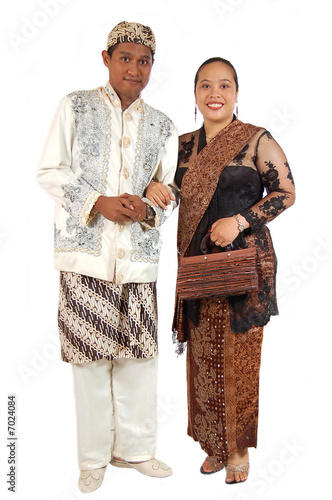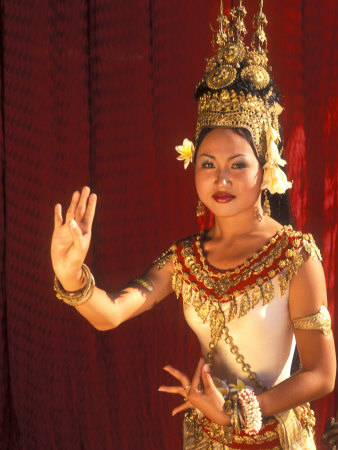Thailand

Most Thai people wear clothes similar to Westerners. Particularly in Bangkok and other big cities. In some rural areas you may find older people wearing what would be considered traditional dress. The teachers in the picture on the left are wearing traditional Thai clothes. Some of them would wear this type of clothing on a daily basis, others only on special occasions. Children would almost always wear Western clothing apart from very special occasions.
Singapore


Myanmar

Traditional costume consist “longyi” (sarong) and “eingyi” (blouse) & (shirt)
Centuries ago, firstly the people from India, Tibet and Mongolia came into Myanmar. The way of the dressing of our earliest people “Pyus” was like Indian people. When King Anawyatha won the battle in India, he brought also Indian traditions and cultures. So, on that time, Indian culture influenced in Myanmar.
Brunei

reflect the culture of the conservative society of Brunei. Officially Brunei is a Muslim country; hence Islam is practiced largely in Brunei. The Muslims generally follow conservative Brunei attire. Brunei women dress in brightly colored apparels. The dresses usually cover their body from head to toe. The Muslim women in Brunei wear a head scarf in public places and in government offices but scarves not applicable to the Non-Muslim women. Muslim men follow the formal dress code in government offices and public places.
Lao

First meeting on Lao women’s dressing preservation held (KPL) A meeting on promotion and preservation of Lao women’s dressing custom, was held on 28 February, at the Lao Women’s Union (LWU) to promote a long traditional culture of nation on dressing of Lao ethnic women. The meeting was chaired by Ms Sisay Leudethmounsone.
Indonesia

Kebaya
There is much speculation as to where the kebaya could have originated from. There are some who say that the kebaya originated in the Middle East, while others argue that it may have come from nearby China. Derived from the Arabic word kaba meaning “clothing” and introduced to Indonesia via the Portuguese language, the term kebaya has come to refer to a garment whose origins appear to be a blouse. It was first worn in Indonesia at some time during the 15th and 16th centuries. This garment is similar to what is described as a “long, fitted, flared kebaya known as kebaya panjang6, worn in the 16th century by Portuguese women arriving on the south-western coast of Malaysia, situated across the Malacca Straits from Sumatra, in northwestern Indonesia.
Malaysia:

The traditional wear of Malay women and men in Malaysia is a colourful skirt called a sarong or a kain. The sarong is a long strip of cloth wrapped around the body, while a kain is similar, except it has its ends sewn together. The man usually wears a shirt with a sarong wrapped around his waist.
The woman wears a long-sleeved blouse with a sarong or a kain. The man also wears a special cap for religious purposes and the woman wears a shawl over her shoulders or on her head. They cover their heads so as not to show their hair. This is to prevent the men from treating them as sex objects, and also because their God has told them to do so.
The Vietnamese traditional dress, "Áo Dài", is one of the most elegant and beautiful dresses for women. It’s very simple, consisting of a close-fitting blouse, with long panels in the front and back, that is worn over loose white trousers. As a Vietnamese girl who loves to travel abroad, sometimes I bring an Áo Dài to travel with me. Whenever I wear it, my Áo Dài always attracts friendly looks from both locals and travelers.
Cambodia (Kampuchea)

Khmer costumes play a very important role in Khmer traditional culture. The Khmer costume consisted of a shirt or blouse and a skirt-like lower garment Sampot for women and Sarong for men. Sampot and Sarong mostly made of cotton or silk in many different style and patterns. Khmer women used to wear Sampot that embroidered with gold and silver threads with a beautiful lace top, may be worn with a long piece of scarf that wrap over the shoulder.
Viet nam

Men: A traditional garment for men is the barong tagalog (pronounced BAH-rong tah-GAH-lawg), an embroidered outer shirt, worn untucked. It has collars, long sleeves and mid-thigh horizontal hemline with side slits. It is made from pina (pineapple fibers), jusi (raw silk) or ramie (grass fibers).
Women: Women wear the heavily starched, butterfly-sleeved terno (pronounced tee-AIR-no) and a matching long skirt on formal occasions.
Muslims: The various Muslim groups in the south and the mountain tribes have their own distinctive garments. The Maranao Muslims of southern Mindanao, for instance, have the colorful malong. It is a large cloth wrapped around the body and is worn by both men and women.
Women: Women wear the heavily starched, butterfly-sleeved terno (pronounced tee-AIR-no) and a matching long skirt on formal occasions.
Muslims: The various Muslim groups in the south and the mountain tribes have their own distinctive garments. The Maranao Muslims of southern Mindanao, for instance, have the colorful malong. It is a large cloth wrapped around the body and is worn by both men and women.
Philippines
Each ethic group in Indonesia has their own traditional costumes. And since there are many different ethnic groups in one province, you will sometime see two or more different costumes. Most costumes that are shown here are usually worn for weddings.
From
http://wiki.answers.com/ http://www.google.com/
From
http://wiki.answers.com/ http://www.google.com/